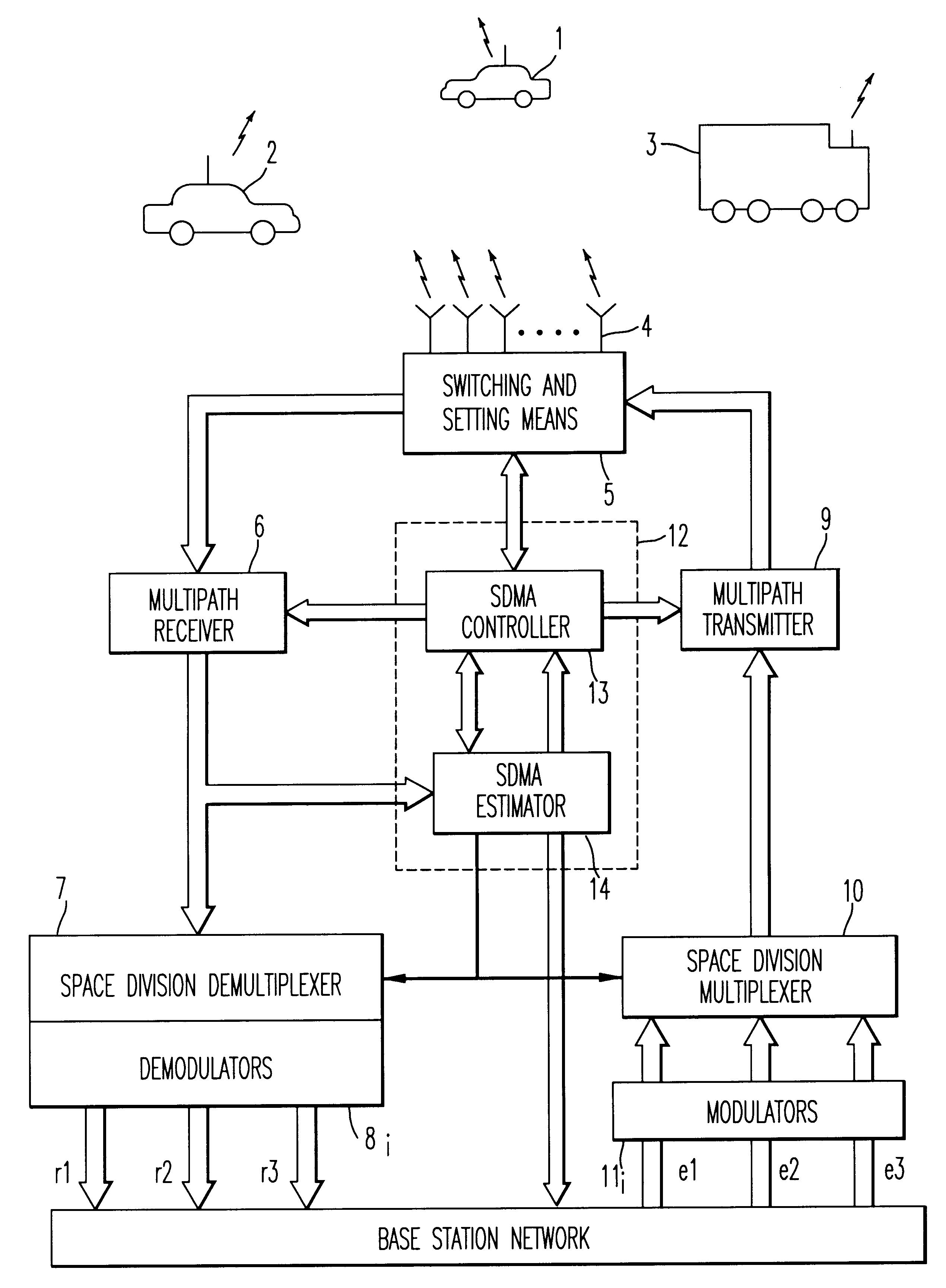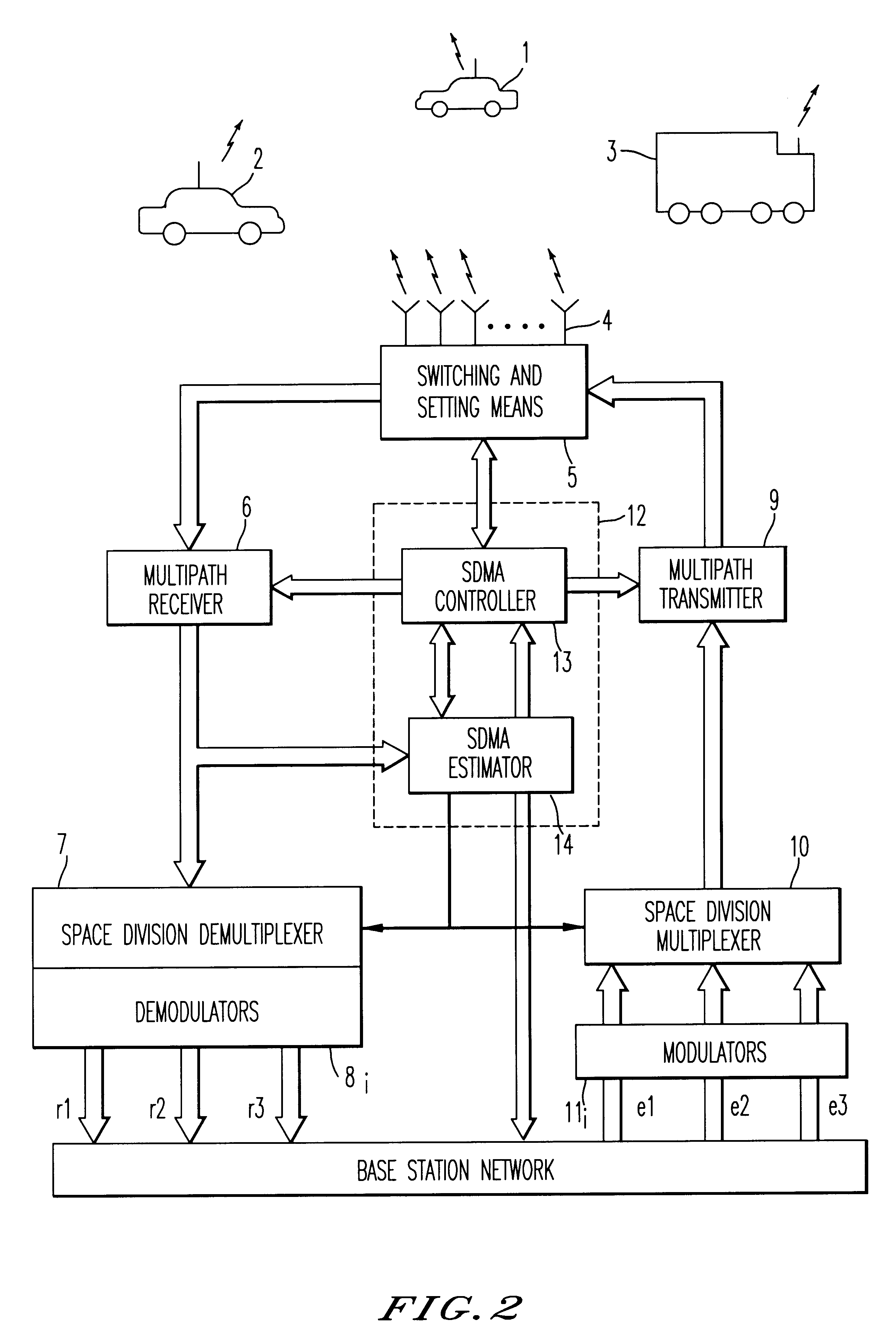Method and device for space division multiplexing of radio signals transmitted in cellular radio communications
a radio signal and multi-channel technology, applied in the field of space division multi-channel multiplexing/demultiplexing of radio signals, can solve the problems of insufficient spectral efficiency, low probability of further improvement in this regard, and simple multiplexing technique affords substantially no opportunity for improving spectral efficiency
- Summary
- Abstract
- Description
- Claims
- Application Information
AI Technical Summary
Benefits of technology
Problems solved by technology
Method used
Image
Examples
Embodiment Construction
In the figures, similar elements are denoted by the same reference.
The method according to the first variant of the invention, the main steps of which are illustrated in FIG. 1, consists, on the basis of multipath transmission / reception 1, in estimating 2 the spatial information relating to each active mobile source present in the cell at the two frequencies which alternately support the transmission and the reception, then, on the basis of this information, in producing optimum global (time division, frequency division and space division) multiplexing / demultiplexing 3 of the communications.
The spatial information characterizing a mobile unit is defined by the direction vectors of the multiple routes of the signal received on the antenna base.
These direction vectors represent the response (amplitude and phase) of the antenna base to a signal incident with an azimuth characteristic of the position of the source.
The estimation 2 of the direction vectors of each source uses signals rec...
PUM
 Login to View More
Login to View More Abstract
Description
Claims
Application Information
 Login to View More
Login to View More - R&D
- Intellectual Property
- Life Sciences
- Materials
- Tech Scout
- Unparalleled Data Quality
- Higher Quality Content
- 60% Fewer Hallucinations
Browse by: Latest US Patents, China's latest patents, Technical Efficacy Thesaurus, Application Domain, Technology Topic, Popular Technical Reports.
© 2025 PatSnap. All rights reserved.Legal|Privacy policy|Modern Slavery Act Transparency Statement|Sitemap|About US| Contact US: help@patsnap.com



